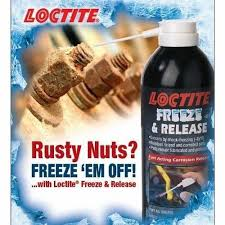WD 40 is named 40 because when the guy who developed it he tried various formulae and number 40 worked the best.
Navigation
Install the app
How to install the app on iOS
Follow along with the video below to see how to install our site as a web app on your home screen.
Note: This feature may not be available in some browsers.
More options
You are using an out of date browser. It may not display this or other websites correctly.
You should upgrade or use an alternative browser.
You should upgrade or use an alternative browser.
Seized bolt removal
- Thread starter DamoC43
- Start date
Bellow
Hardcore MB Enthusiast
Such a shame he stopped at 40...WD 40 is named 40 because when the guy who developed it he tried various formulae and number 40 worked the best.
m80
MB Enthusiast
- Joined
- Apr 26, 2015
- Messages
- 6,819
- Location
- Derbyshire, High Peak
- Car
- Viano ex long, 651 2014. S211 646 2009 (till the Gov't drones blow 'em off the road)
A guy with a fag in his gob walked in and asked what the stuff was.Such a shame he stopped at 40...
So he didn't make it to 41.
- Joined
- Nov 22, 2008
- Messages
- 2,786
- Location
- Leeds, West Yorkshire
- Car
- E280CDI SPORTS ESTATE and C200 KOMPRESSOR SE Coupe Auto (1.8 lit petrol)
When WD40 was first introduced by Suntester Inc of USA, my father was distribution manager for Western Europe..
Yes it does lubricate.
Yes it does penetrate
But - That it not was it was designed for
And - There are a number of better penetrating oils.
* Plus Gas is one of these.
* I use Unilease - manufactured by Unicorn Chemicals of Blackpool.
I bought three spray cans before Unicorn went out of business.
Best I have ever used.
Yes it does lubricate.
Yes it does penetrate
But - That it not was it was designed for
And - There are a number of better penetrating oils.
* Plus Gas is one of these.
* I use Unilease - manufactured by Unicorn Chemicals of Blackpool.
I bought three spray cans before Unicorn went out of business.
Best I have ever used.
Petrol Pete
Hardcore MB Enthusiast
ALFAitalia
MB Enthusiast
- Joined
- Feb 19, 2022
- Messages
- 7,927
- Location
- Bognor Regis
- Car
- 2010 Mercedes W212 E Class E350 CDI Sport, 2006 Mercedes W169 A Class A170.
The best one I've used was called PB Blaster......but its often not easy to find in the UK. Many swear by it on US car forums.
Petrol Pete
Hardcore MB Enthusiast
It's not AF , its rotten. The first 'layer' of the bolt/nut is gone . often you will find an (for example) a corroded 8mm bolt will come undone after tapping a 7mm socket on to it.
50/50 mix works best.
Chrishazle
MB Enthusiast
- Joined
- Nov 13, 2008
- Messages
- 5,794
- Location
- Nr Ashford, Kent
- Car
- 2008 S204 C220CDI Elegance Estate Auto, 2008 R171 facelift SLK280 Auto.
Regarding the temperature that a chef's blowtorch achieves, I have just ordered a replacement for my failed one from Amazon, and the listing shows that the blue flame (remember bunsen burners in the chemistry/physics labs at school) achieves 1300C!! I originally bought mine for Creme Brulee (when the wife makes her pavlova and leaves 4 egg yolks spare), but mainly use it for lighting candles on things like outdoor citronella, table centre food warmers etc, which it did really well!
oldguy57
MB Enthusiast
Those heated coil guns work well for undoing seized nuts and bolts but obviously only if you have good access. WD now to a range of specialist sprays apart from 40.
Bellow
Hardcore MB Enthusiast
A lit match will burn at that temperature. There's more to heat than temperature.Regarding the temperature that a chef's blowtorch achieves, I have just ordered a replacement for my failed one from Amazon, and the listing shows that the blue flame (remember bunsen burners in the chemistry/physics labs at school) achieves 1300C!!
ALFAitalia
MB Enthusiast
- Joined
- Feb 19, 2022
- Messages
- 7,927
- Location
- Bognor Regis
- Car
- 2010 Mercedes W212 E Class E350 CDI Sport, 2006 Mercedes W169 A Class A170.
A lit match actually burns at a temperature of around 600–800°C.....but as you say its the energy used to keep adding heat at a high rate that matters.
Petrol Pete
Hardcore MB Enthusiast
Thats why Oxyacetylene works so well, I used to have a mini set that I acquired through a bankruptcy but the hoses rotted out and I couldnt get it refilled because the bottles were not registered to me (or something like that, can't really remember) . You can buy tiny sets with disposable bottles but not something I need anymore and probably a bit much for the average DIY guy.
Users who are viewing this thread
Total: 1 (members: 0, guests: 1)
Similar threads
- Replies
- 5
- Views
- 585
- Replies
- 2
- Views
- 715

